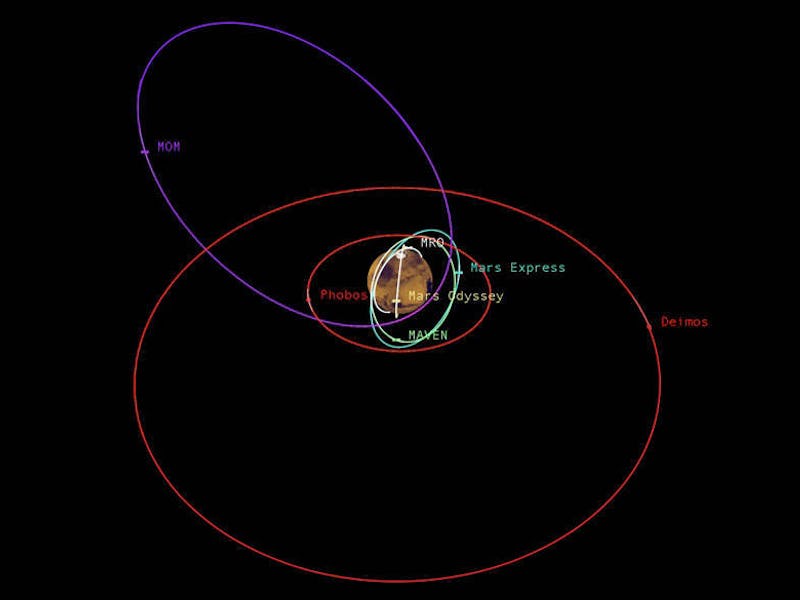We're Turning Mars' Orbit Into a New Space Junkyard
But luckily, NASA already on the case.

A human being has yet to set foot on Mars, but we’ve already exported our horrendous commuting problems to the planet. With the addition of two more orbiters sent by Earthlings to observe the Red Planet, NASA recently announced that it had improved its monitoring of man-made objects circling around Mars to avoid “traffic jams” and collisions.
NASA’s Mars Atmosphere and Volatile Evolution (MAVEN) spacecraft and India’s Mangalyaan probe both made it Martian orbit last September, joining the company of three other probes already there: NASA’s Mars Odyssey and Mars Reconnaissance Orbiter (MRO), and the European Space Agency’s Mars Express. The new updated processes also keep tabs on the movements of the now-defunct Global Surveyor spacecraft — stranded out there since 2006.
A crowded orbit is nothing new to us — there are currently 2,271 satellites in Earth’s orbit, plus tens of thousands of pieces of debris floating around there. Orbital debris has been a increasing concern for NASA and the rest of the world’s space agencies.
But for this to be an issue for Mars is quite the surprise. Collision avoidance around the planet used to be coordinated “between the Odyssey and MRO navigation teams,” Robert Shotwell, Mars Program chief engineer at NASA’s Jet Propulsion Laboratory, said in a statement issued in May but updated earlier today. “MAVEN’s highly elliptical orbit, crossing the altitudes of other orbits, changes the probability that someone will need to do a collision-avoidance maneuver. We track all the orbiters much more closely now. There’s still a low probability of needing a maneuver, but it’s something we need to manage.”
As we near the goal to land a person on Mars sometime during the 2030s, we’re bound to see more and more satellites launched towards it for study, as well as more rovers like Curiosity make their way on land. NASA’s proactive approach to dealing with Martian orbital traffic is a positive sign that we can hopefully avoid during the red planet’s orbit into the cluttered pile of space trash that Earth’s orbit is quickly turning into.